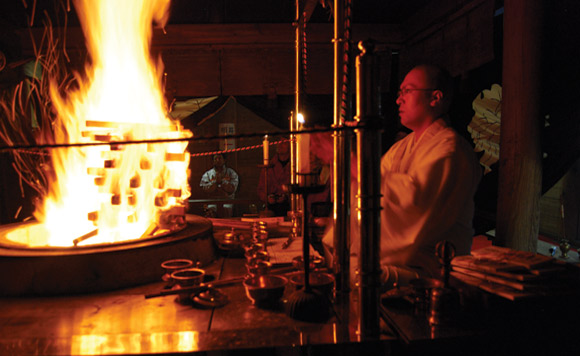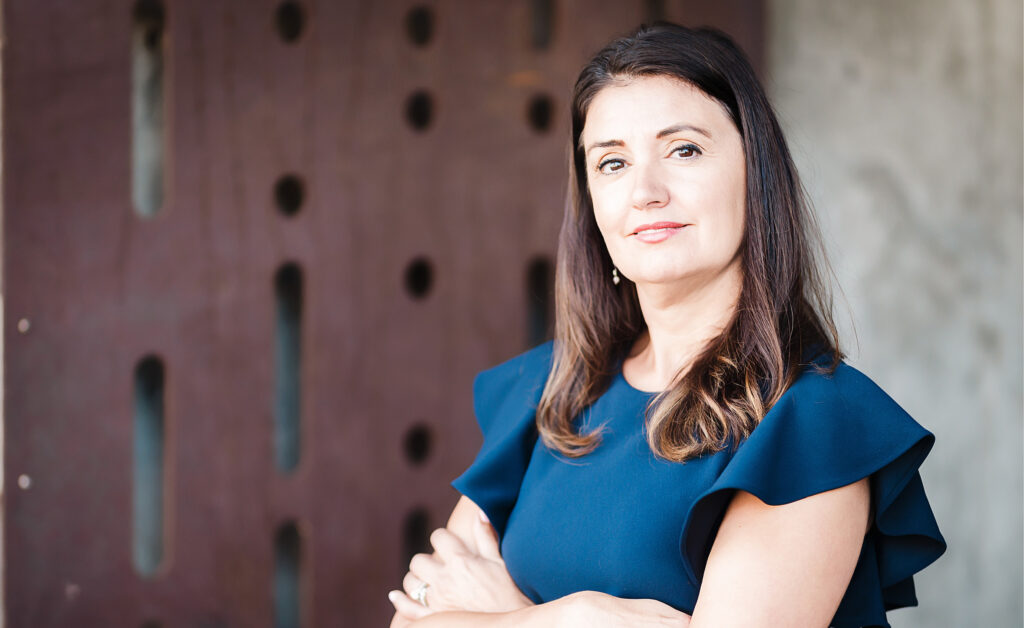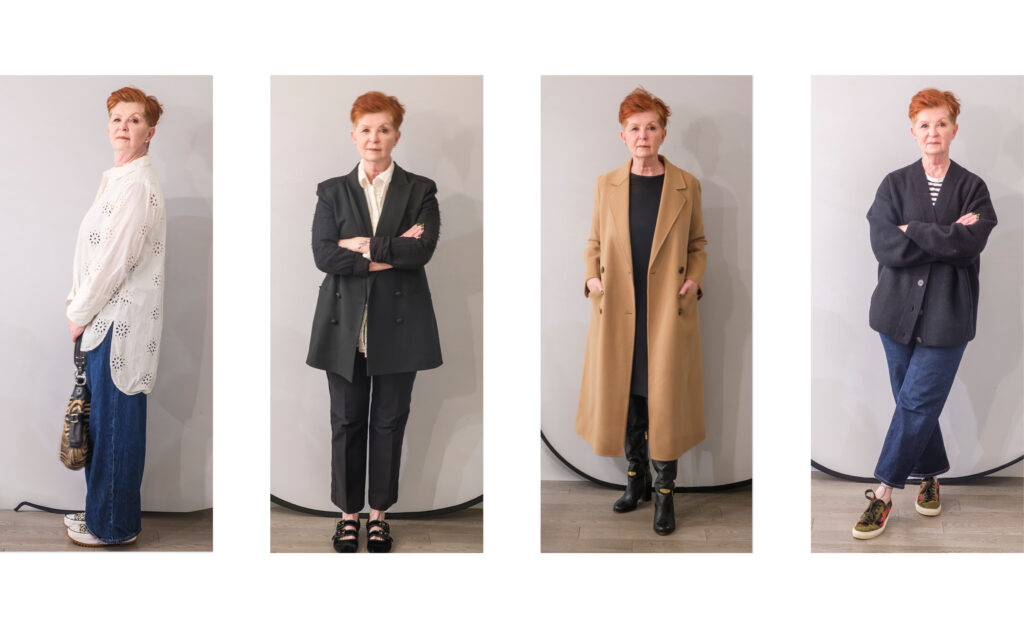– by Suzanne Morphet –
The monk can’t get his barbecue lighter to work. A dozen of us are patiently waiting outside the Buddhist temple of Monjusen-ji, on Japan’s most southerly island. In the pre-dawn gloom we watch the monk fiddle with the cranky device before lighting the candles some other way.
We’ve come to witness the Goma ritual, a form of prayer that has its roots in the Hindu faith. The juxtaposition of modern technology and ancient ritual at a temple that was founded in 648 A.D. is amusing, even if we are shivering in the cold.
Finally, we’re ushered inside. But when another monk begins to slowly and methodically stack blocks of wood while we sit and wait some more, my patience is really put to the test. “Will they ever get this show on the road?” I wonder.
My visit to Monjusen-ji is part of a tour with Walk Japan, a company that specializes in exploring Japan on foot. For 10 days we follow in the footsteps of a monk named Nimmon, who is popularly believed to have introduced Buddhism to the Kunisaki Peninsula on the island of Kyushu in the eighth century.
The remote peninsula was perfect for Nimmon’s ascetic Buddhist practice. In prayerful contemplation, he and his followers climbed the region’s volcanic ridges and descended into its hidden valleys, leaving behind thousands of Buddhist images carved in stone.
By day we walk these same trails, reveling in the mountainous landscape. At night we stay at traditional Japanese inns, luxuriating in thermal hotsprings. By our sixth day, we’ve visited numerous temples and shrines along the trails, but none are quite as spectacularly situated as Monjusen-ji.
Perched high up on a cliff overlooking the Seto Inland Sea, Monjusen-ji is on a list of the “Best 100 Scenes” in Japan. And in late November, with Japanese maple trees at their fiery peak, the temple grounds are stunning.
At last the ceremony inside the temple begins. Buncho – the monk performing today’s ritual – lights a fire in an open pit that represents the mouth of the Buddha. He rubs his prayer beads and begins to chant softly. Another monk lightly beats a drum.
Buncho carefully places the first few wood blocks into the fire, one on top of the other at right angles. Soon, sparks are flying towards the ceiling. The drumming and chanting grow louder and faster in a rising crescendo that matches the leaping flames. In almost no time the fire is so intense I can feel its heat a metre away. Buncho’s face glows from the flames, but he’s not perspiring. We’re told that a monk doesn’t eat any oil or salt for 60 days before performing the Goma ritual, and fasts for four days immediately beforehand so he can sit close to the fire and not sweat.
We sit transfixed by the shooting flames, the pounding drum and the primal chanting. Buncho continues to place block upon block of wood into the roaring fire, along with grains of rice. How long before his tower topples over like a kids’ game of Jenga? I can’t say – by now I’ve happily lost track of the time – but eventually the tower collapses, embers flying. The Buddha has been fed. Our prayers have been heard. Or at least, the ceremony was worth the wait.




